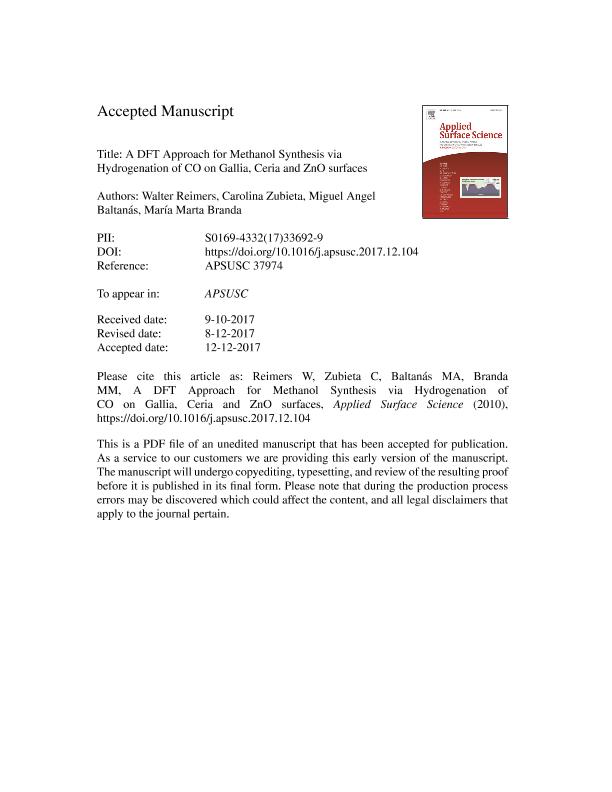Artículo
A DFT Approach for Methanol Synthesis via Hydrogenation of CO on Gallia, Ceria and ZnO surfaces
Fecha de publicación:
01/04/2018
Editorial:
Elsevier Science
Revista:
Applied Surface Science
ISSN:
0169-4332
Idioma:
Inglés
Tipo de recurso:
Artículo publicado
Clasificación temática:
Resumen
A systematic theoretical study of the consecutive hydrogenation reactions of the CO molecule for the methanol synthesis catalyzed by different oxides of Zn, Ce and Ga is reported in this work. First, the CO hydrogenation with the formation of formyl species (HCO) was analyzed, followed by the successive hydrogenations that lead to formaldehyde (H2CO), methoxy (H3CO) and, finally, methanol (H3COH). The co-adsorption with H, in almost all the intermediate species, allows the corresponding hydrogenation reaction. Oxygen vacancies promote the reactivity in the generation of both formaldehyde and methoxy species. The formation of these species involves an important geometric difference between the initial and the final states, leading to high activation barriers. Comparing the surfaces studied in this work, we found that ZnO (0001)vacO has shown to be of a greater interest for methanol synthesis. However, the foregoing is not the most relevant of our results, but, instead, that the Brönsted Evans Polanyi (BEP) relationships between the initial or the final states and the transition states (TS) allowed to find a very good correlation between surface structure and reactivity.
Palabras clave:
CO
,
DFT
,
HYDROGENATION
,
METHANOL
,
OXIDES
Archivos asociados
Licencia
Identificadores
Colecciones
Articulos(IFISUR)
Articulos de INSTITUTO DE FISICA DEL SUR
Articulos de INSTITUTO DE FISICA DEL SUR
Articulos(INQUISUR)
Articulos de INST.DE QUIMICA DEL SUR
Articulos de INST.DE QUIMICA DEL SUR
Articulos(INTEC)
Articulos de INST.DE DES.TECNOL.PARA LA IND.QUIMICA (I)
Articulos de INST.DE DES.TECNOL.PARA LA IND.QUIMICA (I)
Citación
Reimers, Walter Guillermo; Zubieta, Carolina Edith; Baltanas, Miguel Angel; Branda, Maria Marta; A DFT Approach for Methanol Synthesis via Hydrogenation of CO on Gallia, Ceria and ZnO surfaces; Elsevier Science; Applied Surface Science; 436; 1-4-2018; 1003-1017
Compartir
Altmétricas




